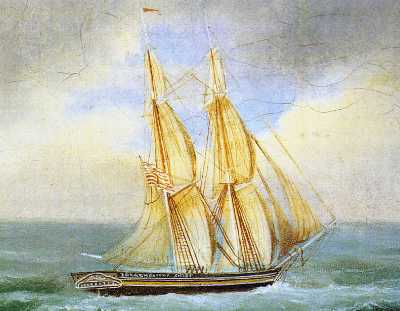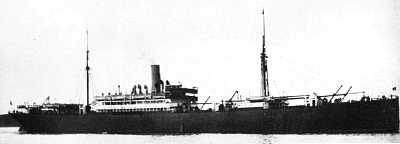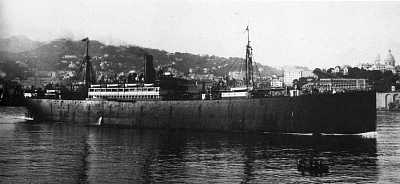Palmer List of Merchant Vessels

|
BÜRGERMEISTER SMIDT (1829)
Oil painting, by Hugo Slevogt, 1842.
Focke-Museum, Bremen. Source:
Peter-Michael Pawlik, Von der Weser in die Welt; Die Geschichte der
Segelschiffe von Weser und Lesum und ihrer Bauwerften 1770 bis 1893,
Schriften des Deutschen Schiffahrtsmuseums, Bd. 33 (Hamburg: Kabel, c1993),
p. 174. To request a copy of this picture, contact the Focke-Museum.
|
The Bremen brig BÜRGERMEISTER SMIDT was built by the shipwright
Johann Lange, Vegesack/Grohn, for the Bremen firm of J. F. W. Iken & Co,
and launched on 4 August 1829. 85 Commerzlasten; 23,9 x 6,9 x 3,8 meters
(length x beam x depth of hold). She was engaged primarily in the passenger
trade to the United States, as well as in the West Indies trade. In 1846,
she was purchased by the Bremen firm of Carl Focke Wwe. & Sohn. Her
masters were, in turn, D. Hilken, H. W. Meyer, Joh. Conrad Petersen, D. D.
Hermann Beenken, Johann Kühlke, Dettmer Meyer, Theodor Prange, F. W.
Volckmann, Johann Hinrich Bramstedt, Cord Hinrich Tepelmann, and Martin
Wencke jun., all residents of Bremen or Vegesack.
In 1852, the brig was sold Norwegian, to Capt. Chr. Boye, of
Christiansund, but continued to sail under her original name. In February
1854, while waiting to sail for France with a cargo of wood, she was badly
damaged in the harbor at Trondheim, and was stranded. She was
subsequently purchased by the merchant and consul Einar Gram, who had her
repaired by the Trondheim shipwright Michael Voigt. She then returned to
service, under the command of Capt. Martin Joachim, trading primarily in
European waters, e.g., between Norway and France, Memel, Dundee, Venice,
Honfleur, Swansea, Barcelona, St. Davids, and Cadiz. In 1862, the brig
was commanded by Edward Gunerius Ranvig, under whom she made several
voyages, inter alia, from France to Cagliari. On one of these journeys
she was dismasted in the English Channel, and was forced to call at Dover
in distress, where she was repaired.
In 1864, the BÜRGERMEISTER SMIDT was broken up at the
Charlottenlund Dock in Trondheim.
Peter-Michael Pawlik, Von der Weser in die Welt; Die
Geschichte der Segelschiffe von Weser und Lesum und ihrer Bauwerften 1770
bis 1893, Schriften des Deutschen Schiffahrtsmuseums, Bd. 33 (Hamburg:
Kabel, c1993), p. 174, no. 101.
[22 Feb 1999]
|
BULGARIA (1898)
CANADA [1913]
BULGARIA [1913]
HERCULES [1917]
PHILIPPINES [1919]
[Right] Photograph of the BULGARIA. Source: Arnold Kludas
and Herbert Bischoff, Die Schiffe der Hamburg-Amerika Linie, Bd. 1:
1847-1906 (Herford: Koehler, 1979), p. 81. To request a larger copy of this scan,
click on the picture.
|

|

|
[Left] Photograph of the BULGARIA leaving the harbor at
Genoa. Collections of Blohm+Voss
GmbH, Hamburg. Source: Clas Broder Hansen, Passenger liners from
Germany, 1816-1990, translated from the German by Edward Force (West
Chester, Pennsylvania: Schiffer Pub., c1991), p. 45. To request a larger copy
of this scan, click on the picture.
|
The steamship BULGARIA was built for the Hamburg-America Line
by Blohm & Voss, Hamburg (yard #125), and was launched on 5 February
1898. 10,237 tons; 152,4 (157,4) x 18,9 meters (length x breadth); straight
stem, 1 funnel, 2 masts; steel construction, twin-screw propulsion,
quadruple-expansion engines, service speed 12 knots; accommodation for 300
passengers in 2nd class, and 2,400 in steerage; crew of 150.
10 April 1898, maiden voyage, Hamburg - Halifax - New York. 1-24 February
1899, during return voyage from the United States, rudder disabled in
mid-Atlantic during a hurricane, and the vessel saved only by the
extraordinary exertions of her crew; she had been given up as lost when
she arrived at Ponta Delgada, Azores, on 24 February. 1906, rebuilt:
11,494 tons, steerage passengers only. 1 February 1913, last voyage,
Hamburg - Boston - Baltimore. 1 April 1913, pretended sale, without payment,
to the Unione Austriaca, as a result of a fare-war with the Canadian
Pacific Line on the Mediterranean-Canada route; renamed CANADA. April
1913, first voyage, Trieste - Quebec - Montreal. 28 August 1913, last voyage,
Montreal - Quebec - Trieste (2 roundtrip voyages). 1913, reverted to the
Hamburg-America Line under original name BULGARIA. 6 December 1913,
resumed Hamburg-Boston-Baltimore service. 11 July 1914, last voyage,
Hamburg-Baltimore (arrived 27 July). 6 April 1917, seized at Baltimore by
the U.S. Government; renamed HERCULES (U.S. Army transport). 1919,
renamed PHILIPPINES (U.S. Shipping Board). 1924, scrapped at New York.
Sources: Arnold Kludas and Herbert Bischoff, Die Schiffe der
Hamburg-Amerika Linie, Bd. 1: 1847-1906 (Herford: Koehler, 1979), pp. 80-81
(photograph); Arnold Kludas, Die großen Passagierschiffe der Welt; Eine
Dokumentation, Bd. 1: 1858-1912 (2nd ed.; Oldenburg/Hamburg: Gerhard
Stalling, 1972, pp. 50-51 (photograph); Noel Reginald Pixell Bonsor, North
Atlantic Seaway; An Illustrated History of the Passenger Services Linking the
Old World with the New (2nd ed.; Jersey, Channel Islands: Brookside
Publications), vol. 1 (1975), pp. 404-405. Pictured also in Clas Broder Hansen,
Passenger liners from Germany, 1816-1990, translated from the German by
Edward Force (West Chester, Pennsylvania: Schiffer Pub., c1991), p. 45.
[30 Apr 1999]
BUSY BEE (1865)
Screw steamship, schooner rigged, built of iron by Palmer, Newcastle,
in 1865. Official Number: 51356; International Signal Code: HDJF. She does
not appear in Lloyd's Register until 1874/75. Measurements (she had
been lengthened in 1870, so these do not indicate her original size):
614/961/852 tons (net/gross/under deck); 231.8 x 28.2 x 17.4 feet (length x
breadth x depth of hold); raised quarter deck 49 tons, forecastle 27 tons;
2 compound vertical engines (by R. & W. Hawthorn, Newcastle), cylinders 28
inches and 50 inches in diameter, length of stroke 30 inches. Owner (1874):
W. D. Stephens. Port of Registry: Newcastle. The BUSY BEE is listed
in Lloyd's Register for 1881/82.
[10 May 1999]


